Audits always seem to be a hot topic!! In this case, energy audit is the subject. An energy audit is often referred to as an electrical budget, an energy budget, and even a power audit.
Note from JD: Here is post about doing your own energy audit or energy budget.
I previously discussed the importance of having an energy plan and posted some numbers for my last motorhome here. Since this subject comes up so often, I thought an update with the audit from my current coach (a 2005 Newmar Dutch Star – JBAM) might prove useful to someone – particularly when attempting to decide on what is needed for a solar charging system.
It is important to understand that these values vary from person to person, coach to coach, and with conditions. The amount of time you use the equipment is a huge factor and, or course, the actual piece of equipment can also be very different (for example, an 800 watt microwave oven vs. a 1500 watt microwave). My budget below is of little value to you directly. What is of value is the example of how to do it and the comparison of my numbers to yours. For example, if you calculate that your water pump consumes 5000 watt-hours (Wh) per day, you might see that mine is nowhere near that and this may lead to some further investigation.
I measured the 12 volt DC consumption of various pieces of equipment.
- Phantom draw: 1.2 amps (LP Gas Detector, clocks, etc…)
- Refrigerator (on LP): .5 amp
- Living Room Lights: 1.6 amps
- Kitchen Lights: .2 amp
- Bathroom Vanity Lights: .5 amp
- Bathroom Ceiling Lights: .7 amp
- Toilet Vanity Lights: .6 amp
- Toilet Ceiling Lights: 1.9 amps
- Water Pump: 6 amps
- Inverter Idle: 2.2 amps
- Laptop: 3.7 – 8.3 amps (depends on laptop battery state – I am employed full-time)
- TV/Satellite Receiver/Surround Sound System: 6 amps
- Furnace: 11 amps (when fan running)
- Stereo: .2 amps
- CPAP/BiPAP: .9 amps (connected directly to 12 VDC system, no humidifier)
- Microwave: 70 amps
I have a number of small items for which I have never taken the time to record power usage. Things like my quad-copter batteries, sewing machine, bicycle computer battery, bicycle light batteries, cell phone, tablet, awning motors, etc. These all use some amount of electricity but it is not very much and pretty random.
A “worst case” day would have me using the following components for approximately this period of time.
- Refrigerator (on LP): 7 watts x 24 hours = 288 Wh (watt-hour)
- CPAP: 12 watts x 8 hours = 96 Wh
- LED Lights: 12 watts x 4 hours = 48 Wh
- TV/Satellite Receiver/Surround Sound System: 75 watts x 6 hours = 450 Wh
- Stereo: 12 watts x 4 hours = 48 Wh
- Laptop: 75 watts x 8 hours = 600 Wh
- Water Pump: 75 watts x .5 hour = 40 Wh
- Furnace: 140 watts x 2 hours = 280 Wh
- Phantom: 15 watts x 24 hours = 360 Wh
Adding up those values amounts to about 2200 watt-hours per day (2.2 kWh per day) (176 Ah) – about worst case.
A more typical day would look like the following:
- Refrigerator (on LP): 7 watts x 24 hours = 288 Wh
- CPAP/BiBAP: 12 watts x 8 hours = 96 Wh
- LED Lights: 12 watts x 2 hours = 24 Wh
- Laptop: 75 watts x 6 hours = 300 Wh
- Water Pump: 75 watts x .5 hour = 30 Wh
- Phantom: 15 watts x 24 hours = 360 Wh
- TV/Satellite Receiver/Surround Sound System: 150 watts x 2 hours = 300 Wh
That is about 1400 Wh per day (1.4 kWh per day) (112 Ah) on a fairly typical day.
It is important to note that I spend most of my time boondocking (referred to as “off the grid” by some, “dry camping” by others) and I do some things differently than when I am plugged in. Some examples include the following. Some people don’t like changing their routine or operating in the manner I do, that is perfectly ok. Just plan your budget accordingly.
- Stove top percolating coffee maker.
- Turn on water heater only when I need it – typically every third or fourth day. I warm up a small pan of water on the stove for dishwashing (instead of warming the 10 gallons of water in the water heater). Spit baths are fairly common as are baby wipes (for that stay fresh feel!).
- Turn on inverter only when I need it.
- Generally do not use microwave except for a quick warm up.
- I nearly always spend the hot portion of the summer high in the mountains to avoid the heat and the cold of the winter in the warmest place I can find so my need for air conditioning and heat is pretty minimal.
- I turn the heat way down at night (about 40-45 degrees) and snuggle up in some down blankets. I turn the heat up first thing upon waking in the morning to take the chill off but then turn it back down again. I do not keep my home at 72 degrees in the winter.
- Running the refrigerator on LP means the ice maker is not working for me. I will typically use the old fashioned manual ice cube trays. Sometimes I’m lazy and plug my ice maker into my inverter.
I have 650 watts of solar panels on my roof. On a nice summer day, they can produce about 550 watts of power for about 7 hours (here in the southwest). This equates to about 3850 watt-hours (or 3.8 kWh per day) or about 285 amp-hours (at a charging voltage of 13.5 volts). On a fairly typical winter day (southwest), this output is down to about 375 watts for about 5 hours. 1875 watt-hours per day or about 138 amp-hours.
For me, my solar charging system is sufficient for my needs based on my energy audit. The generator is used occasionally in the winter if it is exceptionally cold (lots of furnace use) or the sky is cloudy for several days in a row.

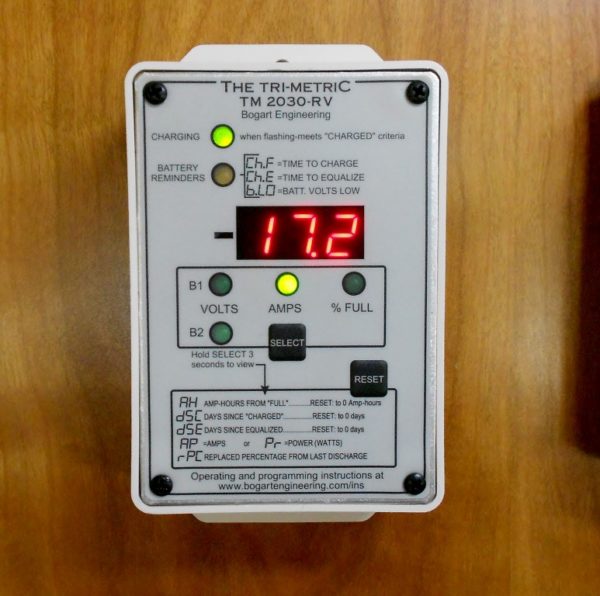
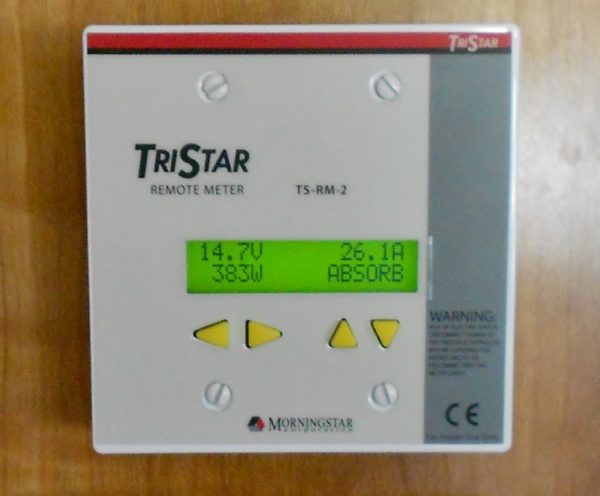
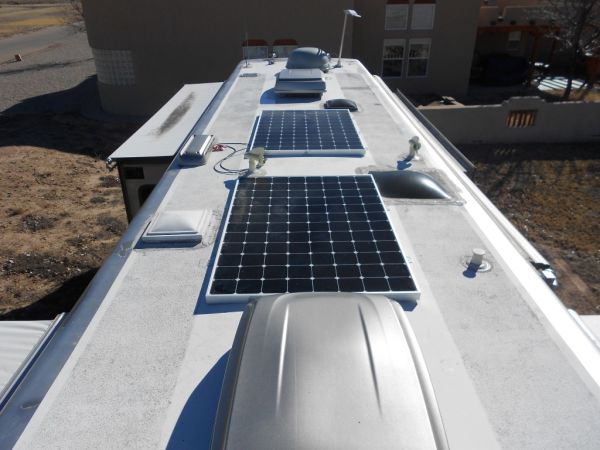
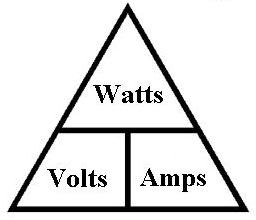

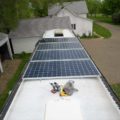
Thanks for the great information and one topic I have wondered about but never took the time to figure it out. It will only be for future travel plans as I don’t travel yet. It’s nice to see that solar system can cover your electrical use with some boondocking modification of lifestyle.
Thanks Steve – solar for RV purposes is pretty amazing!! 🙂